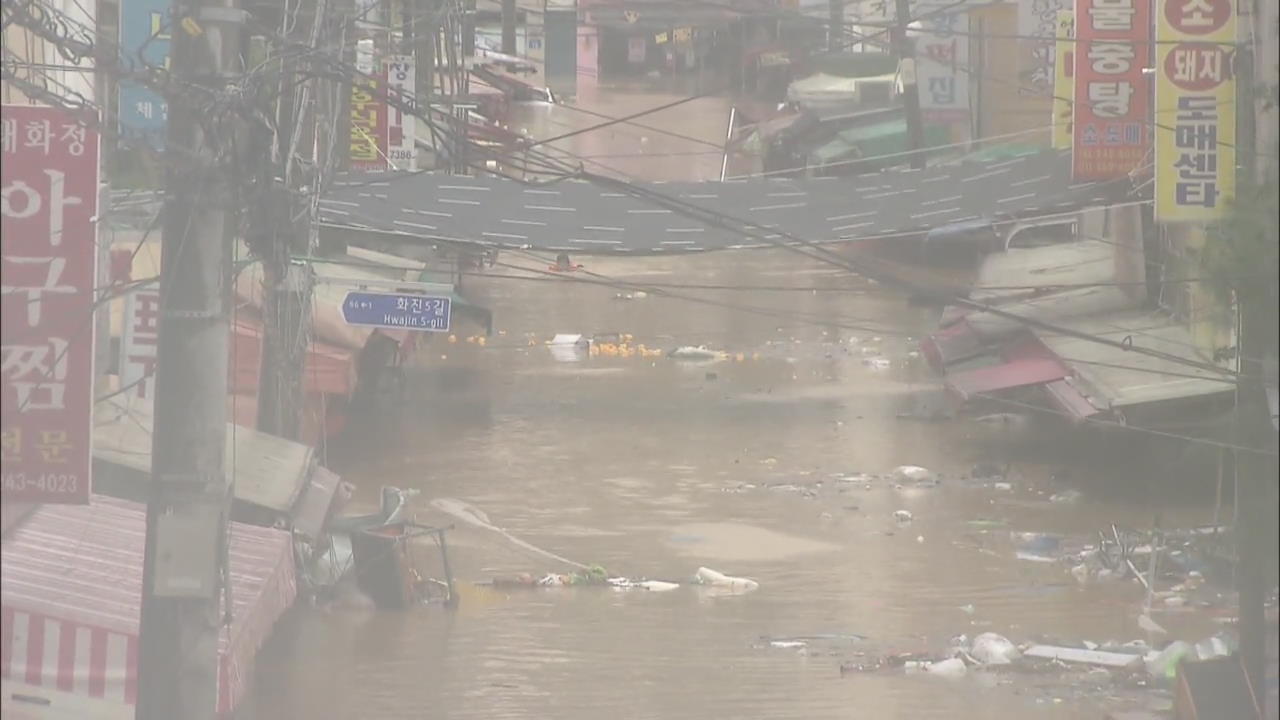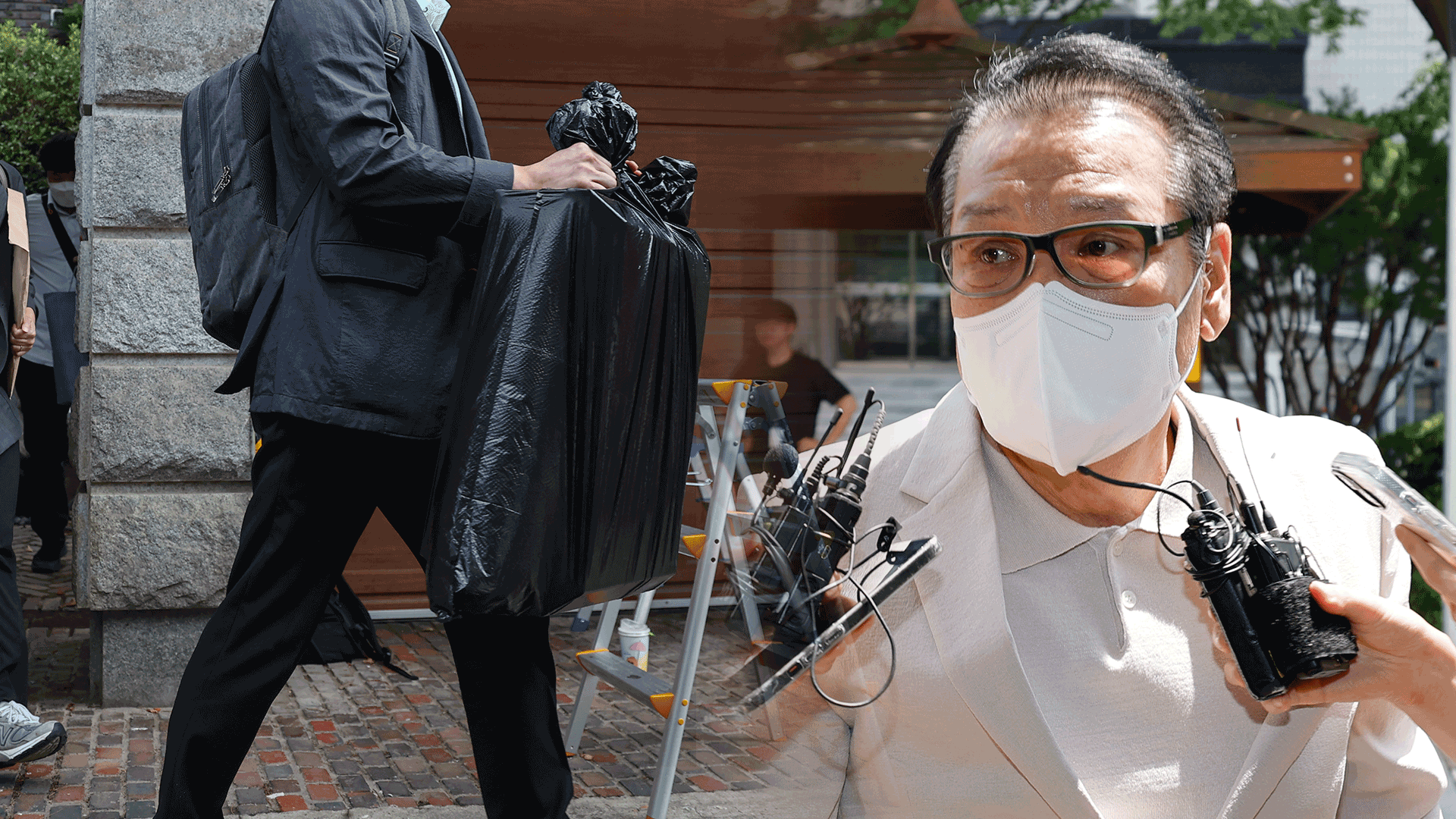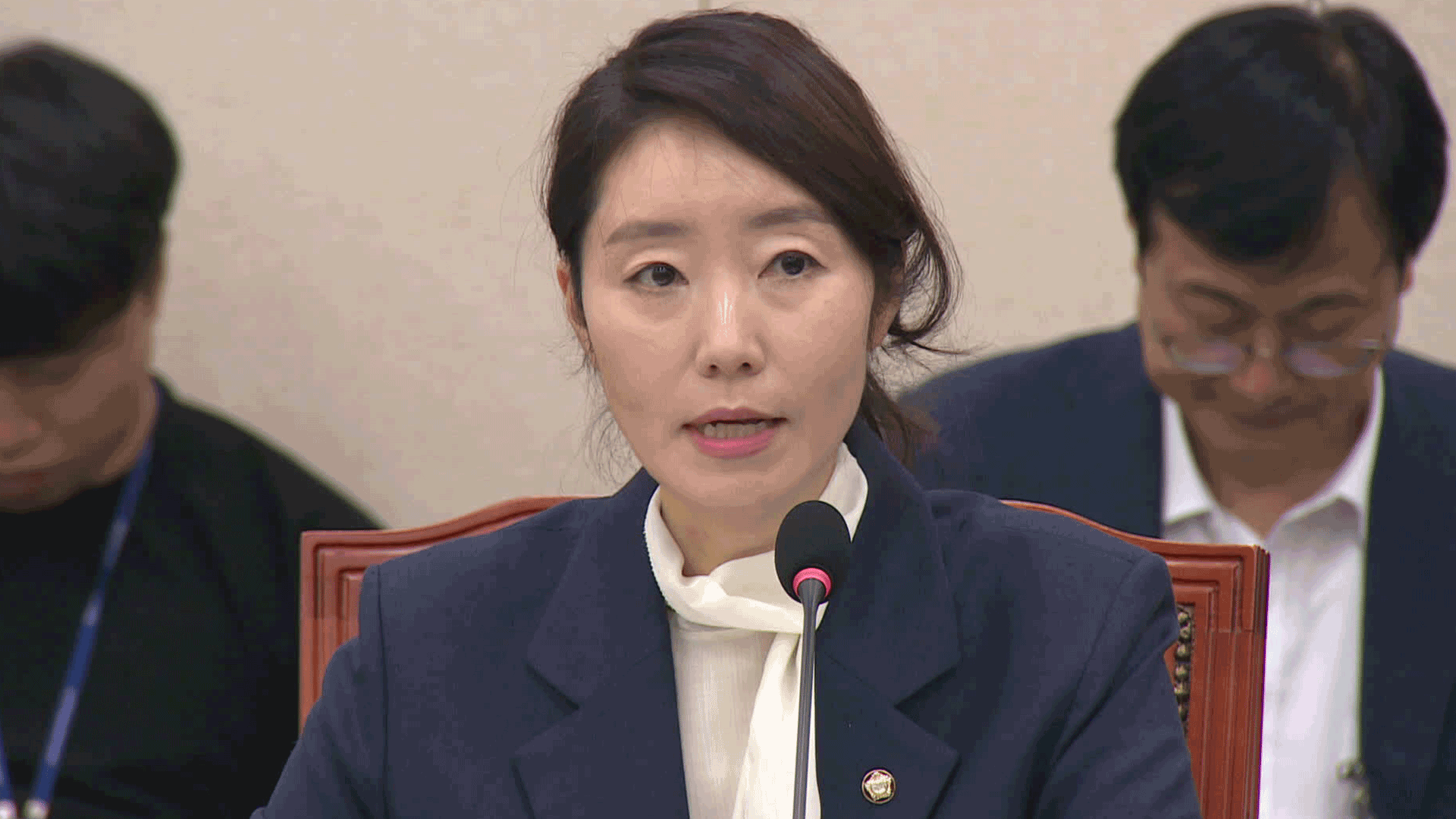Unsual Typhoon
입력 2016.10.06 (14:12)
수정 2016.10.06 (14:35)
읽어주기 기능은 크롬기반의
브라우저에서만 사용하실 수 있습니다.
[Anchor Lead]
Typhoons are quite unusual for Korea in the month of October. They only land on the Korean Peninsula about once in a decade. Experts say that Typhoon Chaba gained strength as it passed over the warm ocean water.
[Pkg]
This 3D imagery of Typhoon Chaba filmed by the National Aeronautics and Space Administration shows heavy clouds carrying torrential rains of over 200 mm per hour. The typhoon landed on the southern coast of Korea while it was still very strong, bringing rains of up to 150 mm per hour to Jejudo Island and the southeastern region of Korea. The accumulated precipitation in Jejudo's mountainous area recorded 660 mm over the past two days. In Ulsan the amount of precipitation surpassed 300 mm. It's quite unprecedented for such a powerful typhoon to hit Korea in the month of October. An analysis of typhoons that have influenced Korea over the past 112 years shows that 90 percent of them occurred between July and September, while only ten affected Korea in October. Strong typhoons usually make landings on the Korean Peninsula before September, when the sea surface temperature is high. Typhoons, which are low tropical pressure, normally gain strength from the warm seawater. This year, seawater temperature off the south coast of Jejudo Island has been found to be at least one degree higher than usual, even though it's already October.
[Soundbite] Lim So-young(Korea Meteorological Administration) : "We are seeing the effects of El Nino's retreat this year as well. Sea surface temperatures have risen off Korea's south coast and in tropical west Pacific areas."
The rain clouds brought by Typhoon Chaba also gained strength from the cold air coming from the northwest, making Chaba the strongest autumn typhoon thus far.
Typhoons are quite unusual for Korea in the month of October. They only land on the Korean Peninsula about once in a decade. Experts say that Typhoon Chaba gained strength as it passed over the warm ocean water.
[Pkg]
This 3D imagery of Typhoon Chaba filmed by the National Aeronautics and Space Administration shows heavy clouds carrying torrential rains of over 200 mm per hour. The typhoon landed on the southern coast of Korea while it was still very strong, bringing rains of up to 150 mm per hour to Jejudo Island and the southeastern region of Korea. The accumulated precipitation in Jejudo's mountainous area recorded 660 mm over the past two days. In Ulsan the amount of precipitation surpassed 300 mm. It's quite unprecedented for such a powerful typhoon to hit Korea in the month of October. An analysis of typhoons that have influenced Korea over the past 112 years shows that 90 percent of them occurred between July and September, while only ten affected Korea in October. Strong typhoons usually make landings on the Korean Peninsula before September, when the sea surface temperature is high. Typhoons, which are low tropical pressure, normally gain strength from the warm seawater. This year, seawater temperature off the south coast of Jejudo Island has been found to be at least one degree higher than usual, even though it's already October.
[Soundbite] Lim So-young(Korea Meteorological Administration) : "We are seeing the effects of El Nino's retreat this year as well. Sea surface temperatures have risen off Korea's south coast and in tropical west Pacific areas."
The rain clouds brought by Typhoon Chaba also gained strength from the cold air coming from the northwest, making Chaba the strongest autumn typhoon thus far.
■ 제보하기
▷ 카카오톡 : 'KBS제보' 검색, 채널 추가
▷ 전화 : 02-781-1234, 4444
▷ 이메일 : kbs1234@kbs.co.kr
▷ 유튜브, 네이버, 카카오에서도 KBS뉴스를 구독해주세요!
- Unsual Typhoon
-
- 입력 2016-10-06 14:13:26
- 수정2016-10-06 14:35:57

[Anchor Lead]
Typhoons are quite unusual for Korea in the month of October. They only land on the Korean Peninsula about once in a decade. Experts say that Typhoon Chaba gained strength as it passed over the warm ocean water.
[Pkg]
This 3D imagery of Typhoon Chaba filmed by the National Aeronautics and Space Administration shows heavy clouds carrying torrential rains of over 200 mm per hour. The typhoon landed on the southern coast of Korea while it was still very strong, bringing rains of up to 150 mm per hour to Jejudo Island and the southeastern region of Korea. The accumulated precipitation in Jejudo's mountainous area recorded 660 mm over the past two days. In Ulsan the amount of precipitation surpassed 300 mm. It's quite unprecedented for such a powerful typhoon to hit Korea in the month of October. An analysis of typhoons that have influenced Korea over the past 112 years shows that 90 percent of them occurred between July and September, while only ten affected Korea in October. Strong typhoons usually make landings on the Korean Peninsula before September, when the sea surface temperature is high. Typhoons, which are low tropical pressure, normally gain strength from the warm seawater. This year, seawater temperature off the south coast of Jejudo Island has been found to be at least one degree higher than usual, even though it's already October.
[Soundbite] Lim So-young(Korea Meteorological Administration) : "We are seeing the effects of El Nino's retreat this year as well. Sea surface temperatures have risen off Korea's south coast and in tropical west Pacific areas."
The rain clouds brought by Typhoon Chaba also gained strength from the cold air coming from the northwest, making Chaba the strongest autumn typhoon thus far.
Typhoons are quite unusual for Korea in the month of October. They only land on the Korean Peninsula about once in a decade. Experts say that Typhoon Chaba gained strength as it passed over the warm ocean water.
[Pkg]
This 3D imagery of Typhoon Chaba filmed by the National Aeronautics and Space Administration shows heavy clouds carrying torrential rains of over 200 mm per hour. The typhoon landed on the southern coast of Korea while it was still very strong, bringing rains of up to 150 mm per hour to Jejudo Island and the southeastern region of Korea. The accumulated precipitation in Jejudo's mountainous area recorded 660 mm over the past two days. In Ulsan the amount of precipitation surpassed 300 mm. It's quite unprecedented for such a powerful typhoon to hit Korea in the month of October. An analysis of typhoons that have influenced Korea over the past 112 years shows that 90 percent of them occurred between July and September, while only ten affected Korea in October. Strong typhoons usually make landings on the Korean Peninsula before September, when the sea surface temperature is high. Typhoons, which are low tropical pressure, normally gain strength from the warm seawater. This year, seawater temperature off the south coast of Jejudo Island has been found to be at least one degree higher than usual, even though it's already October.
[Soundbite] Lim So-young(Korea Meteorological Administration) : "We are seeing the effects of El Nino's retreat this year as well. Sea surface temperatures have risen off Korea's south coast and in tropical west Pacific areas."
The rain clouds brought by Typhoon Chaba also gained strength from the cold air coming from the northwest, making Chaba the strongest autumn typhoon thus far.
이 기사가 좋으셨다면
-
좋아요
0
-
응원해요
0
-
후속 원해요
0

















이 기사에 대한 의견을 남겨주세요.